base_url <- "https://www.wsdot.wa.gov"
endpoint <- "ferries/api/vessels/rest/vesselverbose"
# Compose the API request
req <- request(base_url) |>
req_url_path_append(endpoint) |>
req_url_query(apiaccesscode = Sys.getenv("WSDOT_ACCESS_CODE"))
# perform the request
response <- req |>
req_perform()
# convert the body of the response to a tibble
response_body <- response |>
resp_body_string() |>
jsonlite::fromJSON() |>
as_tibble()Raw Data Retrieval, Working with
Databases, and Automation


Section Agenda
- Downloading data from sources
- Writing production data to a database
- Automating the pipeline
- Email alerting, part 1
Project Overview
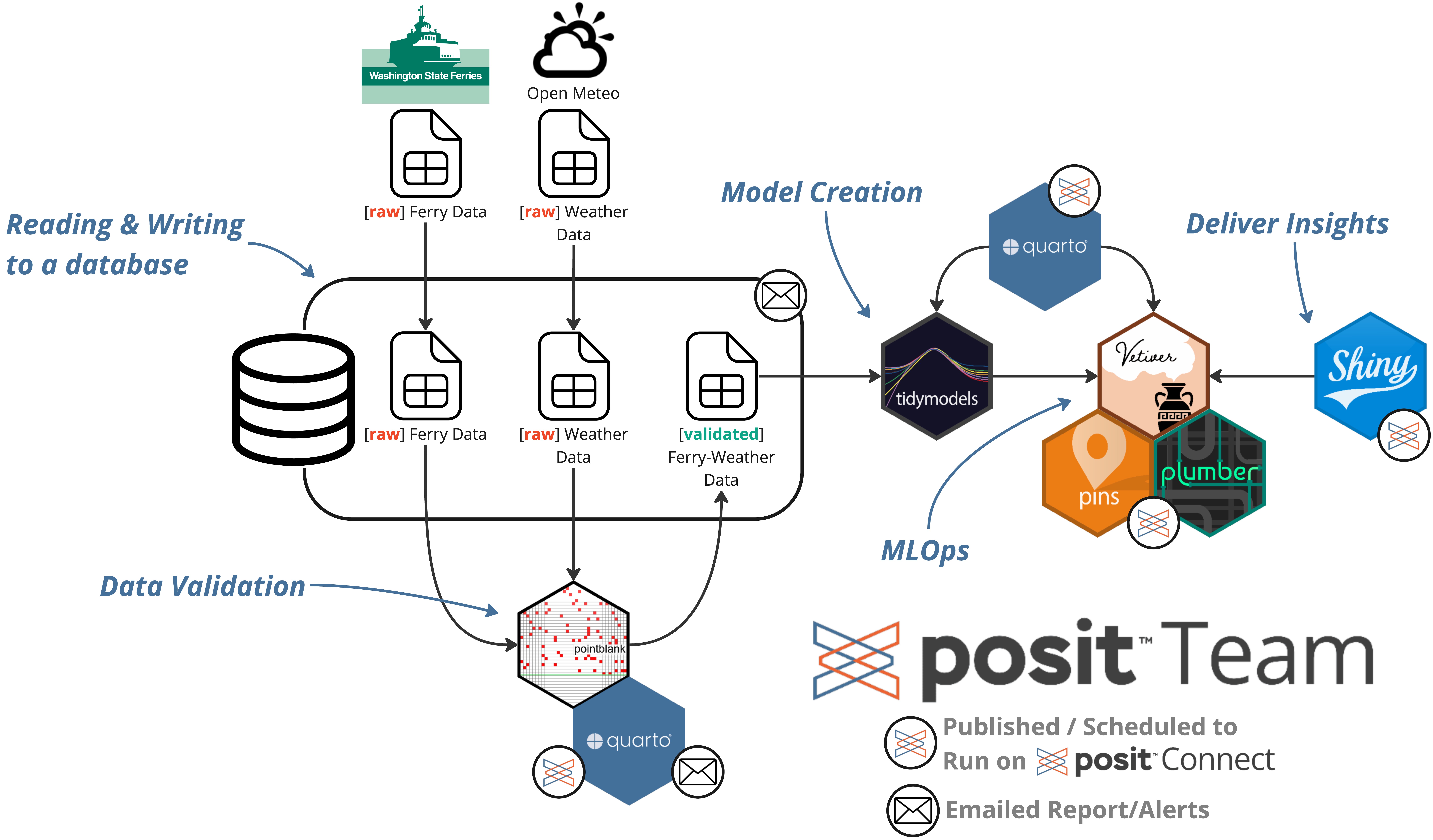
Download raw data from an API endpoint
Your first instinct for retrieving raw data may be to download the data as a csv file.
💡 There’s a better way!
- Many data sources offer an API endpoint for downloading data
{httr2}provides wrapper functions aroundcurlrequests for easier querying and handling of responses
{httr2} is a ground-up rewrite of {httr} that is pipeable! It implements an explicit request object that solves common problems such as built-in rate-limiting, retries, OAuth, secure secrets, and more.
Reading API Documentation
Example httr2 request
Here’s how we will query the vesselverbose endpoint at
https://www.wsdot.wa.gov/ferries/api/vessels/rest/vesselverbose?apiaccesscode={WSDOT_ACCESS_CODE}
Activity Time!
Activity
👉 Activity objective: Download the vesselverbose data from the WSDOT API endpoint.
- Open the project
materials/01-raw-data-write/01-raw-data-write.Rproj - Open the file
01-raw-data-write.qmd - 🛑 We will work through Task 1 - Task 2 only
Where should I put the data?
📣 Production data belongs in a database.
Database Connection Essentials
2 parts to a database connection:
- A driver (on your system or as part of a R package)
- A means to interact with the driver (e.g.,
{DBI}package)
Best case: one of the DBI-compliant db-specific packages
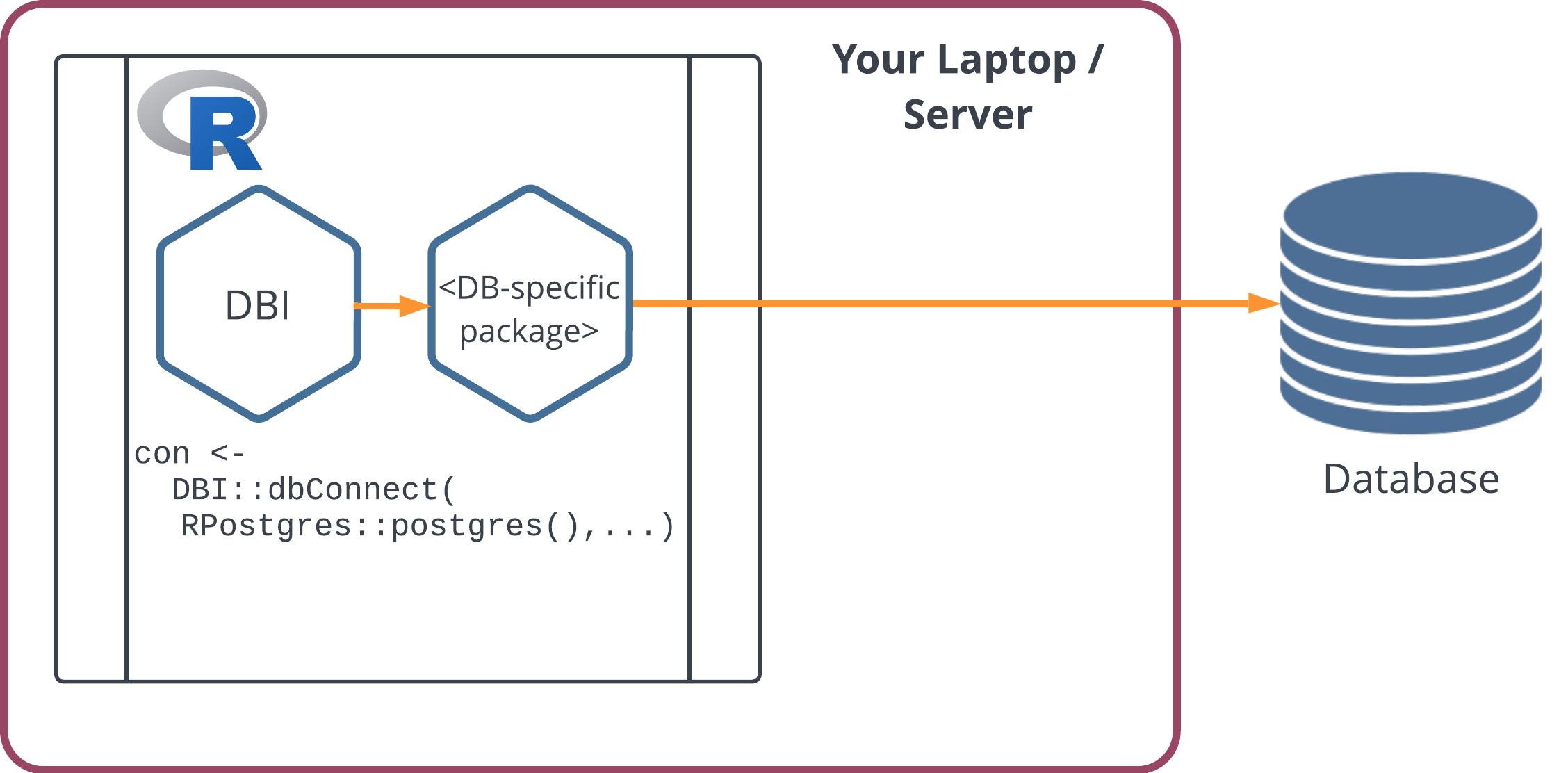
Alternative: odbc::odbc() + an ODBC driver installed on your system 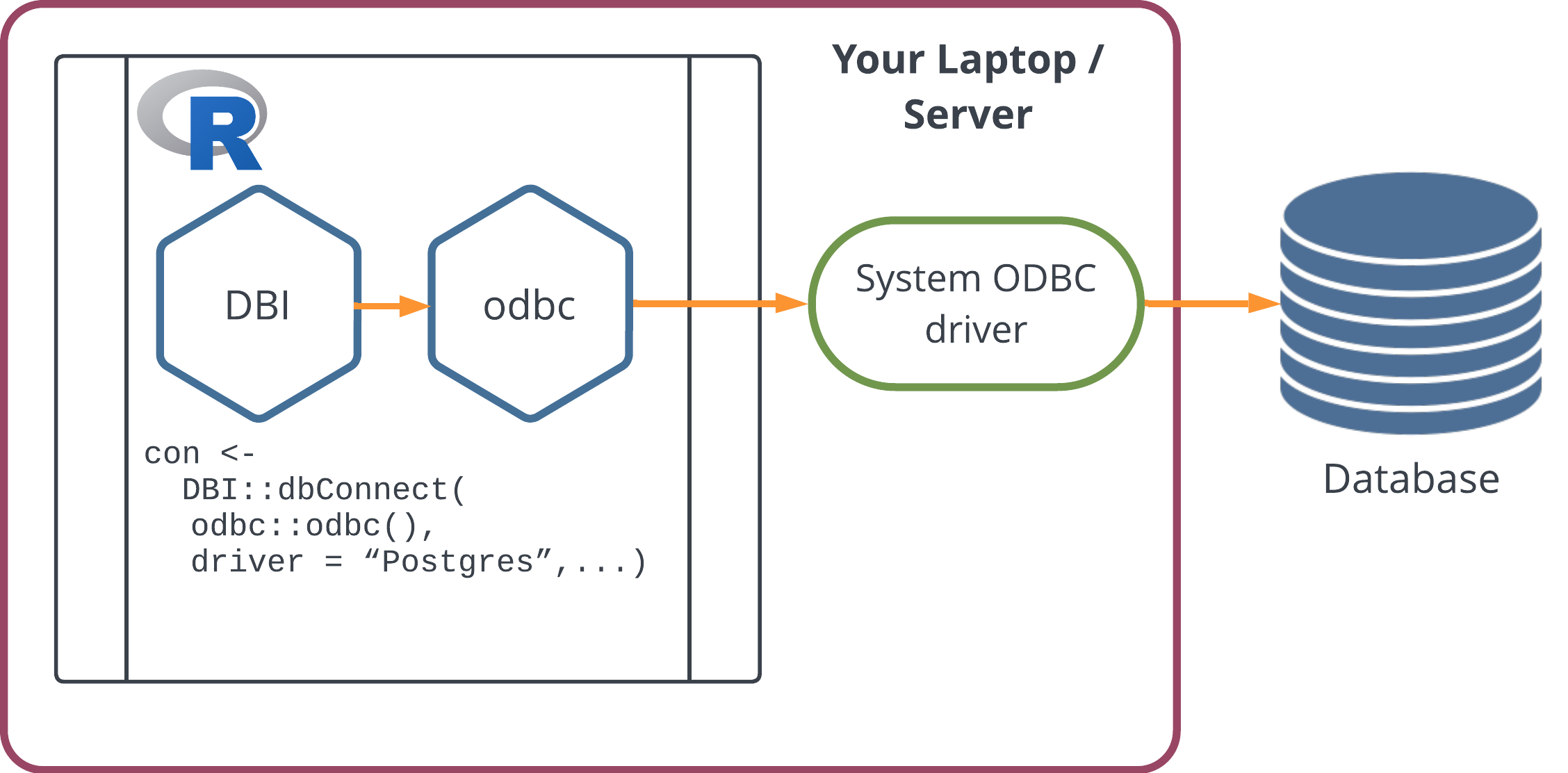
📣 When possible, use a database-specific R package (e.g., RPostgres, RMariaDB, RSQLite, bigrquery, etc.) instead of odbc + a driver. In many cases, they are more performant (especially in writing data) and may have more translations available for query types.
Interacting with Databases
What tables are in a database?
DBI::dbListTables(con)Use
dplyrto interact with the database table in the same manner you would a local data frame📣 Do as much work as possible in the database to save time and resources before bringing the table into local memory.
Use
dplyr::collect()to bring the table into memory. Try to usecollectas late as possible in your queries / transformations
More on databases
Best practices in working with databases
Activity Time!
Activity
👉 Activity objective: Write the vesselverbose data to the database.
- Return to the file
01-raw-data-write.qmd - 🛑 We will work through Task 3 - Task 5 only
How do I automate this process?
🧰 Deploy and schedule your ETL and reports on Posit Connect

- Connect renders your notebook / runs your code
- Render on demand or on a schedule
- Can email the rendered report or notebook to you, collaborators, and/or viewers
Introduction to Emailing with Posit Connect
Posit Connect can send an email when a report or notebook renders
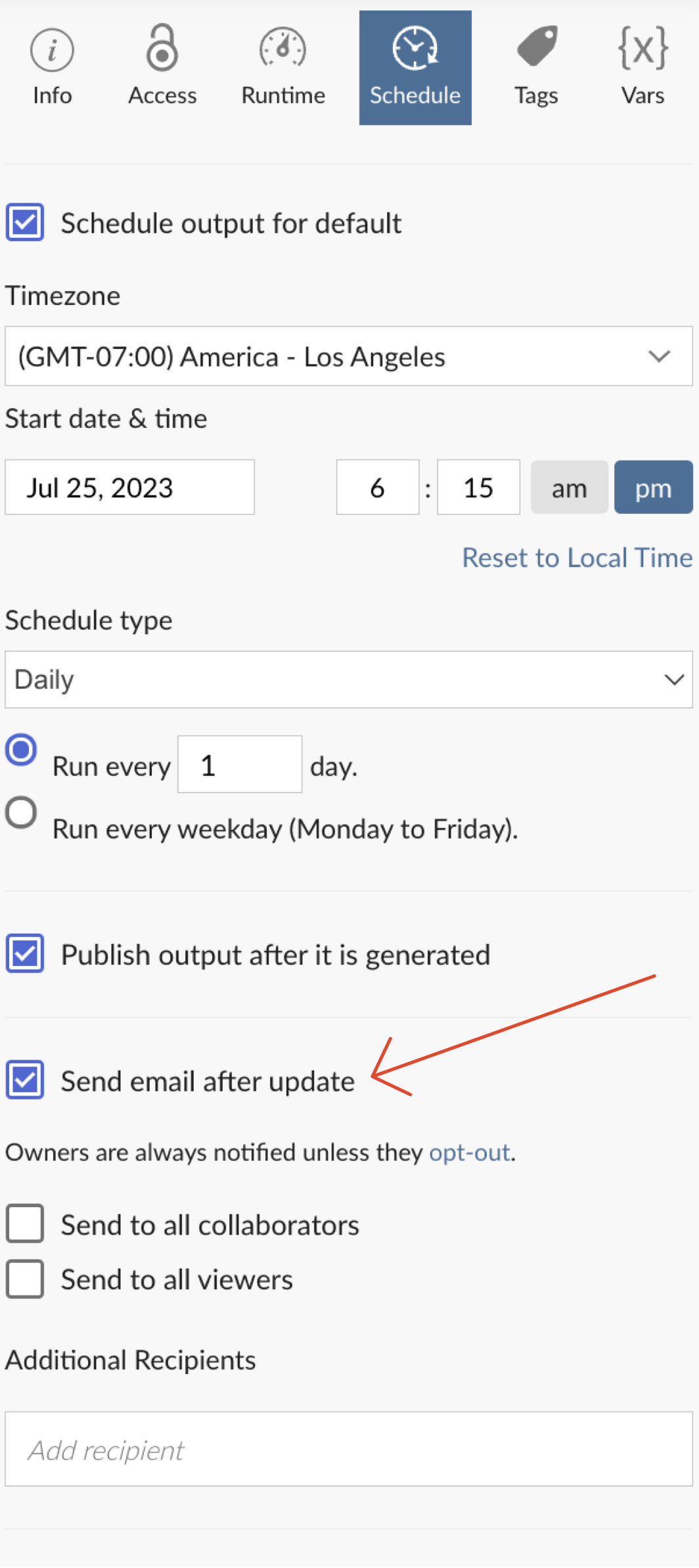
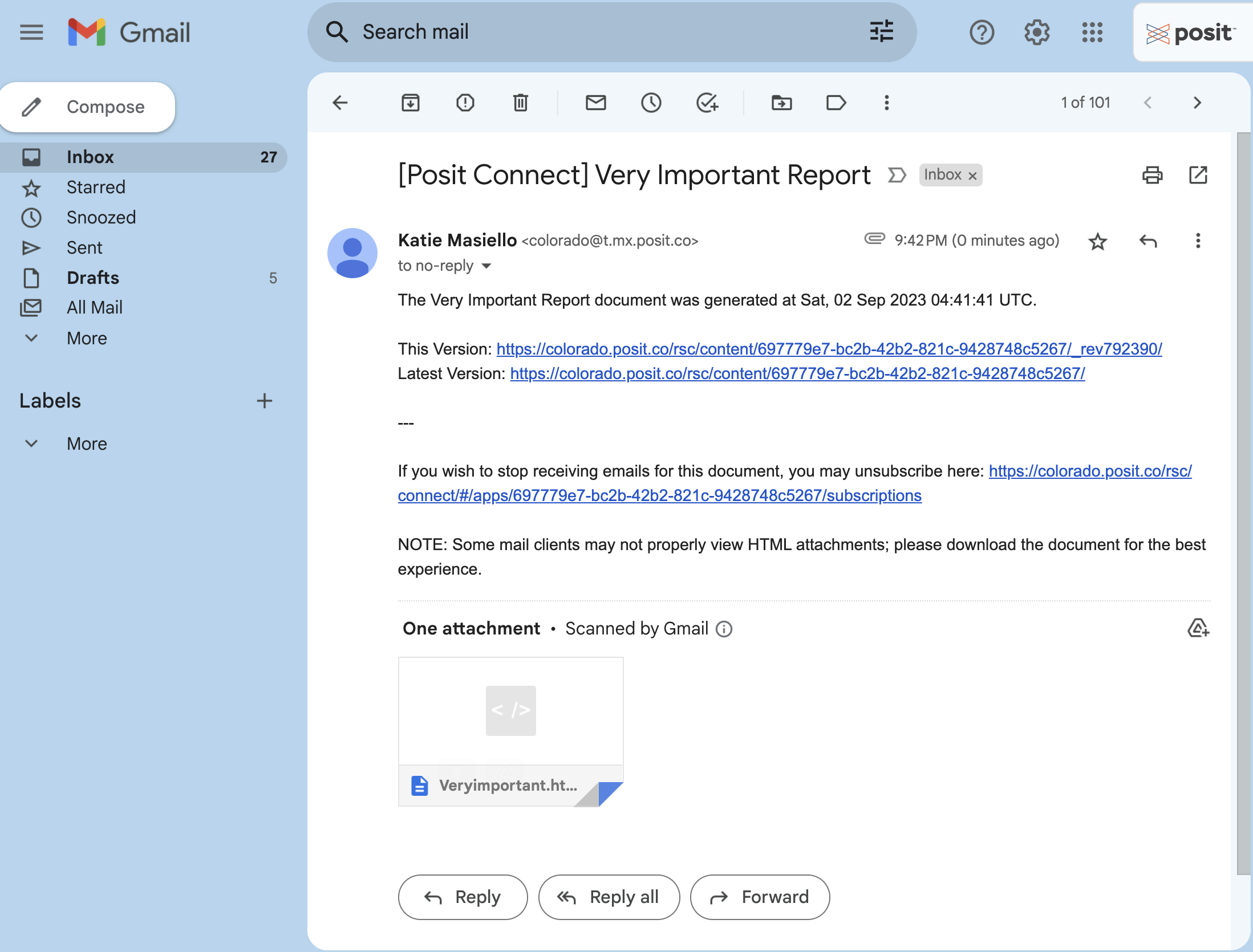
🚫
🥱 This email is non-informative
🔊 Creates noise in the inbox
🙈 Does not compel anyone to look at it
Introduction to Emailing with ![]() and Connect
and Connect
Create richly-formatted emails as part of your Quarto notebook

+
=
 🧰
🧰
Customized emails
A Basic Quarto Email
---
title: Something wonderful
format: email
---
Some of the content in this document makes its way to the rendered HTML
and some of it is destined for a custom email message. The 'email' block
customizes the subject and the body of the email message, while the
rendered HTML contains only this paragraph.
:::: {email}
This email was sent from Quarto!
::: {subject}
subject
:::
::::A Basic Quarto Email with Conditional Send
---
title: Something wonderful
format: email
---
Some of the content in this document makes its way to the rendered HTML
and some of it is destined for a custom email message. The 'email' block
customizes the subject and the body of the email message, while the
rendered HTML contains only this paragraph.
```{r}
send_email <- sample(c("TRUE", "FALSE"), 1)
```
:::: {email}
:::{email-scheduled}
```{r}
send_email
```
:::
This email was occasionally sent from Quarto!
::: {subject}
subject
:::
::::
Activity Time!
Activity, Part 1
👉 Activity objective: Work with a simple Quarto email document and preview the email locally
- Return to the project
01-raw-data-write.Rproj - Open the file
simple-quarto-email/_simple-quarto-email.qmd - We will render this document and preview the email locally
Activity, Part 2
👉 Activity objective: deploy and schedule our production notebook on Posit Connect so it runs automatically and sends an email if there’s something amiss with the raw data.
- Return to the file
01-raw-data-write.qmd - 🛑 We will work Task 6 to the end of the document
Recap of Alerting, Part 1
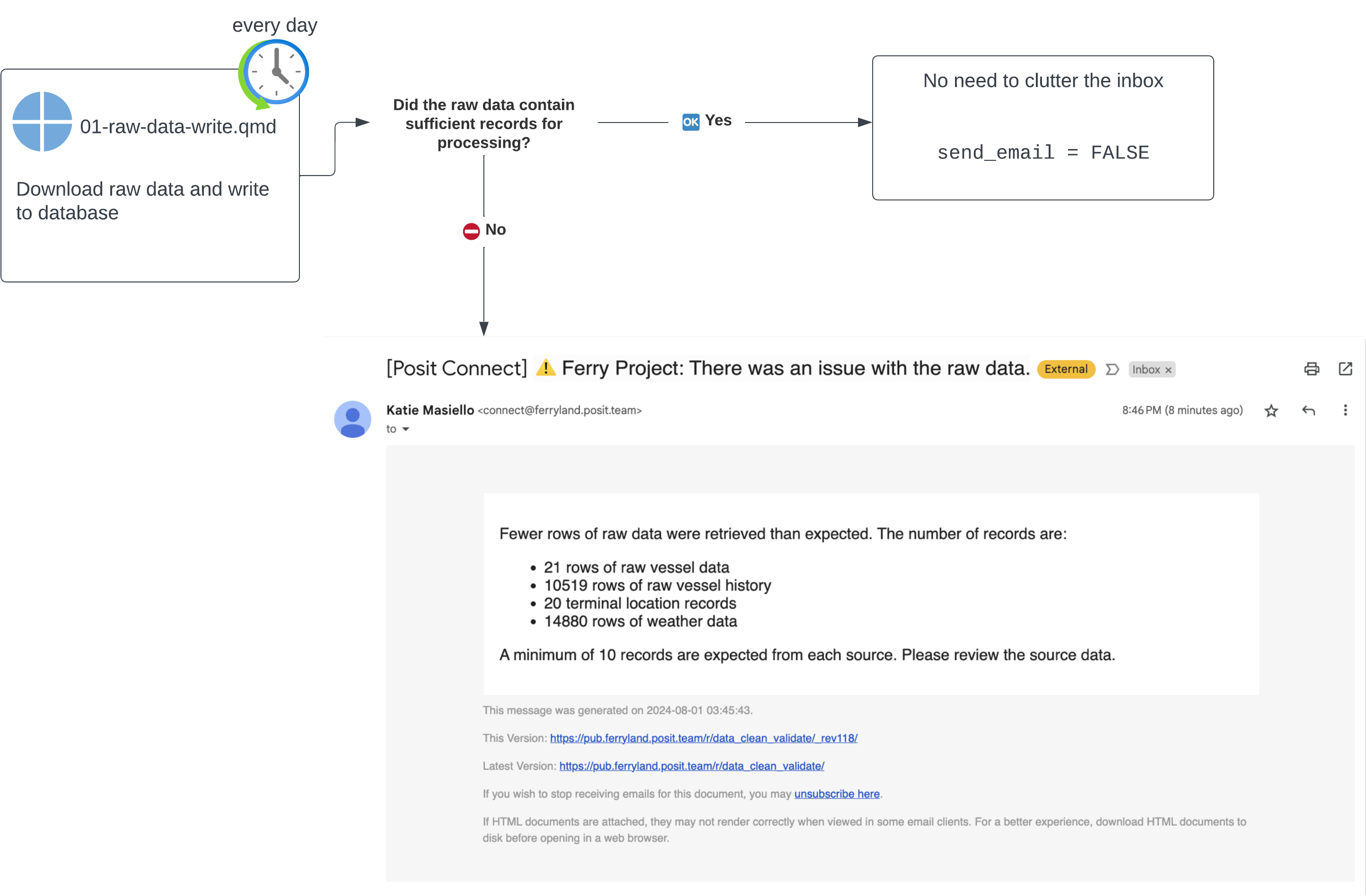
Where are we

Click to go back to Data Science Workflows with Posit Tools - R Focus website ↩︎